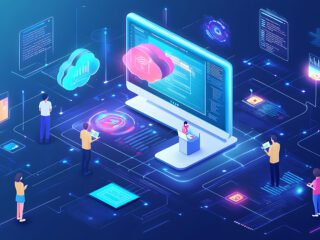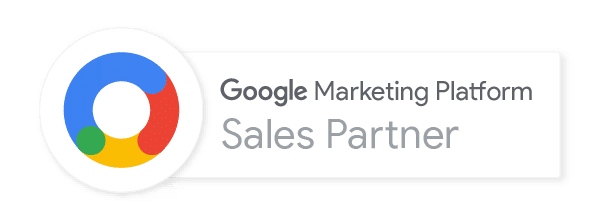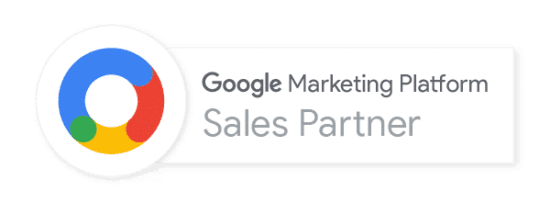“The biggest hurdle, particularly with large companies, is convincing them that they don’t have to run everything themselves.” said Nicholas Carr in the beginning of 2008.
“We’re going to see that, just as the electric grid dramatically expanded the availability and reduced the cost of mechanical power, and that led to all sorts of knock-on effects: the way society is organized, the way we think about education, the way we think about consumerism. We’ll see similar effects as we’re all essentially hooked up to this one huge worldwide computer, this Internet-based supercomputer that all of us share.”
In his interview with Edward Cone of CIO insight he argues that “just as the electric grid […] led to all sorts of knock-on effects: the way society is organized, the way we think about education, the way we think about consumerism. We’ll see similar effects as we’re all essentially hooked up to this one huge worldwide computer, this Internet-based supercomputer that all of us share.”
10 months later Google is pushing Google Apps, Microsoft has released their own cloud based services, Adobe has Photoshop online.
Starring at the clouds
A couple of week after Carr’s interview IT consulting firm Gartner released their predictions for the following years. “By 2012,” they predicted, “50 per cent of traveling workers will leave their notebooks at home in favour of […] new classes of Internet-centric pocketable devices at the sub-$400 level; and server and Web-based applications that can be accessed from anywhere.” Resulting will be that “at least one-third of business application software spending will be as service subscription instead of as product license. ” with 40% of IT as a service by as near as 2011. It will be “a new class of applications: portable personality that encapsulates a user’s preferred work environment, enabling the user to recreate that environment across multiple locations or systems.”
“Over time,” says Carr “[…]it will make more sense for software suppliers to get out of the hardware business, to get out of the infrastructure business and supply their services to third-party data center networks.
Businesses midsize or smaller, Carr argues, will lead the way as these businesses don’t have the resources to develop IT infrastructures, and as such have more to gain. For larger companies the change will be more gradual “Then they’ll pull in utility services from the grid to complement what they’re doing internally. That hybrid model is going to last for large companies quite a long time.”
Concerns over Security
Privacy and security has been a point of contention for companies who value their privacy. The concern is about the lack of control a company has over its own IT, and in an era of leaked Hotmail passwords and other security breaches, companies are nervous about leaving their data into the cloud.
We’ve argued before that security concerns are over rated. Given the absurd levels of security that cloud providers such as Google have to have (especially Google, with the billions of dollars worth of Adwords money going through their system every day) they are likely more secure than any individual set up.
Carr also considers this fear unfounded, arguing that
“The issues about security are in one sense a little bit overblown. Companies get used to allowing third-party suppliers access to sensitive information all the time […] Ultimately the utility model will provide greater data security than we have in today’s fragmented model.
[…]
[For instance] CRM is one of the leading software-as-a-service offerings. That means putting very sensitive account information into somebody else’s database. Companies have been doing that with payroll for many years.”
The Future of IT
The adoption of the cloud model may be happening faster than either Carr or Gartner thought, spurred perhaps by their comments, perhaps by the speed at which quality cloud software has been put out.
Since 2008 Avago, Salesforce, The City of Los Angeles, Washington DC, Genentech,Jaguar Landrover, Motorola’s handset division, and Konica Minolta,have all moved to Google Apps.T-Systems,Siemens have adopted Microsoft Azure.IBM has begun delivering some of its infrastructure software as an on-demand service through Amazon Web Services.Rick Rashid, VP of research at Microsoft, remarked that 20% of all servers are being bought by large internet companies such as Google, Microsoft, and Yahoo.
Changes in infrastructure will mean a change in IT. “In the long run, the IT department is unlikely to survive, at least in its familiar form. It will have little left to do once the bulk of business computing shifts out of private data centers and into ‘the cloud.”
The big question, he argues, is whether IT skills–such as “information management and thinking”–will remain a part of a separate IT department or whether they will flow into “business units and other traditional parts of the business”. He predicts that over the next decade and a half technical IT will fade away with experts going onto the grid. “I would be surprised if maybe 20 years from now there are still IT departments in corporations.”
I’m making the final leg of my switch to Google Apps today. I’ll let you all know how it turns out.
















